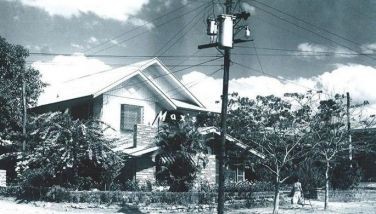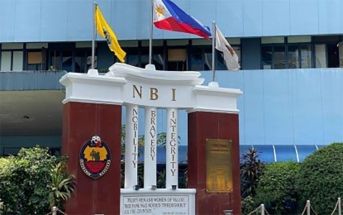Times a-changin

Finally, a completely underground subway in the Philippines.
According to Japan’s Ambassador to the Philippines Koshikawa Kazuhiko, the Metro Manila Subway was first planned in the 1970s, but it remained a plan for about half a century.
Just recently, Koshikawa attended the signing ceremony for the second tranche of an official development assistance (ODA) loan agreement amounting to 253.3 billion yen to fund the Metro Manila Subway Project Phase I between the Japan International Cooperation Agency (JICA) and the Department of Finance.
The agreement was signed between Finance Secretary Carlos Dominguez and JICA Philippines representative Azukisawa Eigo. This follows Japan’s first tranche funding of 104.53 billion yen signed in March 2018.
Koshikawa revealed that this “project of the century” is now steadily progressing and that Japan’s tunnel boring machine will soon start excavating under the Metro Manila area in the second quarter of this year.
He said the Metro Manila subway will serve as one driving force to revitalize the Philippine economy, adding that Filipinos can count on Japan to continuously extend utmost support until this project is successfully completed.
As one of the flagship developments under the Duterte administration’s Build Build Build program, the 17-station subway will reduce the travel time between Quezon City and NAIA from the current 70 minutes to only 35 minutes, and will address the worsening congestion in Metro Manila caused by poor road network and the rising population’s demand for transportation, the Embassy of Japan said in a statement.
Last Feb. 5, the first tunnel boring machine arrived in the country. The 700-ton TBMs, measuring seven meters in diameter and 95 meters in length, will dig underground and lay tunnels for the 27-kilometer project. The TBMs will be manufactured by Japanese companies and delivered to the Philippines over the course of the project implementation.
Once completed, Japan said the Metro Manila subway would be the Philippines’ first fully underground railway system, spanning from Barangay Ugong in Valenzuela City to NAIA in Pasay City.
According to the Department of Transportation, they have already awarded the contracts and construction is ongoing for the partial operability section of the first seven kilometers or first four stations. The contract for the 240 train cars has already been awarded.
The partial operability of the subway comprises the first stations in Quezon City and in Valenzuela where the line’s depot is also located. These are the stations in East Valenzuela, Quirino Highway, Tandang Sora Avenue, and North Avenue.
The partial operability section is expected to be operational late this year while the entire stretch of the subway is targeted to be finished by 2026.
The underground rail system aims to accommodate up to 370,000 passengers per day by its first day of operation. Some stations will rise on government property, such as Camp Aguinaldo, to ensure that it is accessible to the riding public.
According to build.gov.ph, the subway project has a budget of P227 billion.
Its stations include those that will be built in Quirino Highway, Tandang Sora, North Avenue, Quezon Avenue, East Avenue, Anonas, Katipunan, Ortigas North, Ortigas South, Kalayaan Avenue, Bonifacio Global City, Lawton East, Lawton West, FTI, and Bicutan.
Renders released by the DOTr reveal that the design of the subway stations will be similar to those found abroad, including walking accommodations for the visually impaired installed on the floor of the facilities. Now I remember… Osaka’s streets have these.
It was actually Japanese inventor Seiichi Miyake who came up with a system based on touch (by using canes, poles, guide dogs or feet) that allows visually impaired people to navigate public spaces. Today, tactile paving is used by major cities and transportation services around the world.
It was in 1965 when Miyake used his own money to build special mats with raised shapes that led blind and visually impaired people away from danger and toward safety. Pavement with round bumps was meant to signal nearby danger, such as a street crossing or the edge of a train platform, while a stretch of pavement with straight bars was meant to guide them to safe areas.
Originally called Tenji blocks, Miyake’s system was mandatory in all Japanese rail stations. In the 1990s, the US, the UK, and Canada embraced tactile pavement in their cities.
His initial design has changed throughout the years. There are now pill-shaped bumps to indicate changes in direction and raised lines running perpendicular to foot traffic to signal upcoming steps. Being brightly colored, they are visible to pedestrians with visual impairments.
5G leadership
Smart Communications, the wireless unit of telco leader PLDT, has reaffirmed its leadership in 5G roaming, serving customers in 45 countries worldwide.
The company recently revealed that customers in Malta, Croatia, Indonesia, Greece, Czech Republic, Slovenia, Cyprus, Portugal, Poland, Guam, and France can now enjoy live 5G roaming services with their 5G-capable SIMs and devices through Smart’s partnerships with global telco operators in these countries.
Smart has increased its 5G roaming coverage with 68 roaming partners in five continents, striking up additional partnerships in Canada, Turkey, South Korea, Singapore, Hong Kong, and Bulgaria to serve more customers wherever they are in the world. The service is also available in Taiwan, Bahrain, United Arab Emirates, Saudi Arabia, Kuwait, Israel, China, Australia, Switzerland, Japan, Thailand, Denmark, Vietnam, Qatar, Ireland, Oman, Germany, Luxembourg, Italy, Austria, Romania, Finland, Norway, Sweden, Belgium, South Africa, the United Kingdom, and the US.
Smart wireless core and international business group VP Chet (?? please ask Maryann for last name)revealed that their goal is to enable their global customers with fast data speeds whenever they access Smart 5G roaming services through its growing list of international telco partners.
The accelerated deployment of 5G in the Philippines is part of PLDT and Smart’s broader initiative to deliver world-class mobile experience to its customers nationwide.
To support growing mobile data traffic, Smart has increased to 75,400 its total base stations nationwide as of end-December 2021, supporting its 3G, 4G/LTE and 5G subscribers from Batanes to Tawi-Tawi. This includes around 7,200 5G base stations.
Supporting Smart’s mobile network is PLDT’s extensive fiber footprint, which was at 743,700 kilometers as of end-2021.
Fast-tracked infrastructure development indeed provides our country a stronger backbone it needs to leap forward.
For comments, e-mail at mareyes@philstarmedia.com
- Latest
- Trending
































